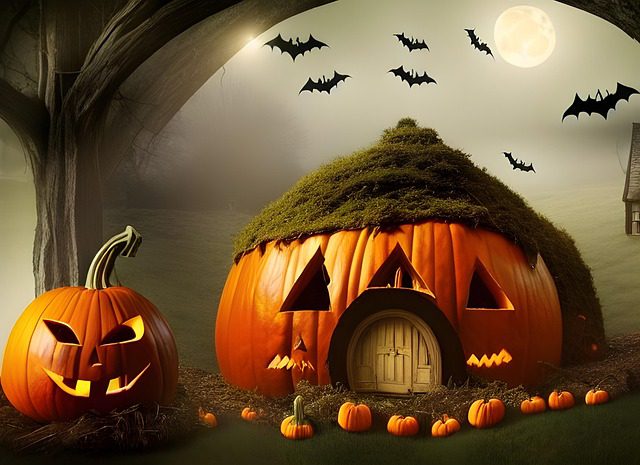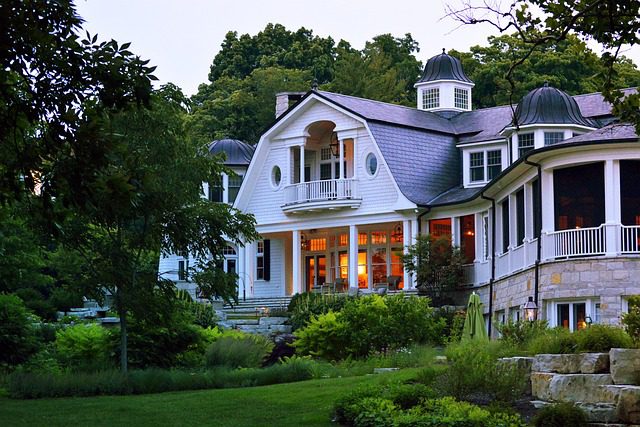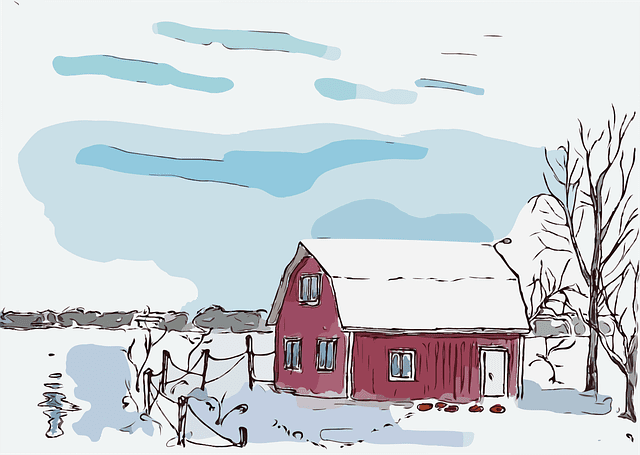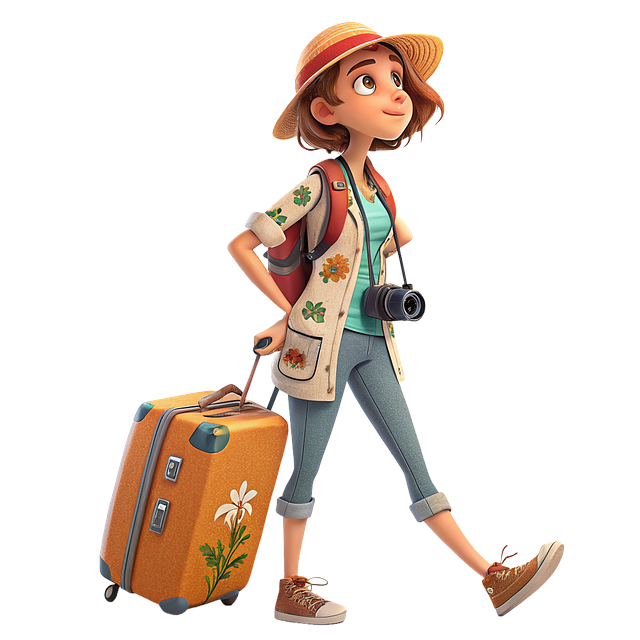The Origins of Halloween
Ancient Celtic Roots and the Festival of Samhain
Long before pumpkins glowed and candy filled children’s hands, the ancient Celts honored Samhain—a solemn festival marking the end of harvest and the beginning of winter’s chill. It was a liminal night, suspended between the living and the dead, when spirits were believed to wander freely through mist and moonlight. Fires blazed atop hills to ward off unseen entities, and offerings of food and drink were left to appease them. Samhain was both celebration and caution—a recognition that darkness, too, is part of life’s natural rhythm.
The Transition from Pagan Rituals to Christian Traditions
As Christianity spread across the British Isles, the old customs of Samhain were gradually interwoven with new holy days. The Church declared November 1st All Saints’ Day—a time to honor the holy departed—and the evening prior became All Hallows’ Eve. Yet the echoes of pagan mysticism remained. Bonfires continued to burn, and villagers still whispered of restless souls at their doors. Thus, Halloween emerged as a tapestry of faith and folklore, balancing reverence and revelry.
The Evolution of Halloween in Medieval Europe
By the Middle Ages, Halloween had transformed into a blend of sacred observance and communal festivity. The practice of souling took root, where the poor went door-to-door offering prayers for the dead in exchange for food. Masquerades grew popular, and villagers donned disguises to confuse mischievous spirits. Across Europe, the festival evolved—its rituals adapting to shifting beliefs while keeping alive the primal fascination with life beyond the veil.
The Birth of Modern Halloween
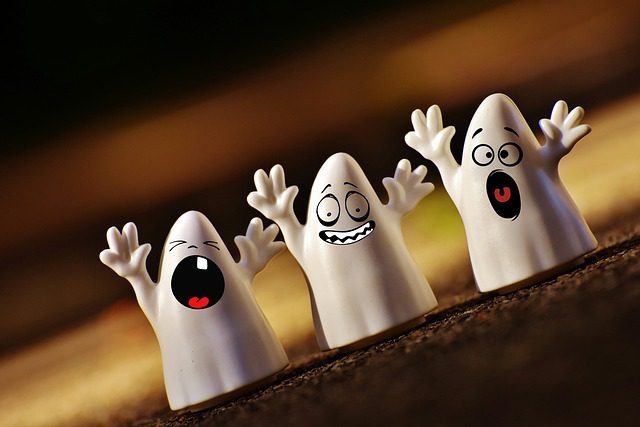
Photo by Pixabay / Free to use under license.
Irish Immigration and the American Transformation
When Irish immigrants brought their Halloween customs to America in the 19th century, they sowed the seeds of a new tradition. In bustling towns and growing cities, the ancient customs found fresh expression—ghost stories, mischief nights, and pumpkin carving. The American landscape, rich with cultural diversity, transformed Halloween into a communal celebration that fused old-world folklore with new-world exuberance.
From Harvest Festival to Haunted Holiday
What began as a quiet marking of seasonal change soon evolved into a spectacle of fright and fun. The autumn harvest lent its bounty—apples, corn, and gourds—to the décor, while storytelling turned toward the eerie and mysterious. Communities began hosting parades, barn dances, and haunted hayrides. Halloween shed its purely rural character and embraced the theatrical, becoming a night of imagination unbound.
The Commercialization of Halloween in the 20th Century
By the early 1900s, Halloween had entered the realm of industry. Candy companies, costume designers, and toy manufacturers capitalized on the growing enthusiasm. The holiday became a cornerstone of seasonal retail, its orange and black imagery saturating store shelves. Yet beneath the consumerism, the ancient pulse of wonder remained—the shared thrill of darkness and delight that no advertisement could fabricate.
Symbols and Superstitions of the Season
The Jack-O’-Lantern: From Turnips to Pumpkins
The Jack-O’-Lantern’s grin was born in Irish folklore, where tales spoke of “Stingy Jack,” a trickster doomed to roam the earth with only a carved turnip and a coal ember to light his way. In America, the pumpkin replaced the turnip—larger, brighter, and perfectly suited for eerie artistry. The carved lantern came to represent protection against wandering spirits and a beacon of festive mischief.
Ghosts, Spirits, and the Veil Between Worlds
Halloween stands at the crossroads of the tangible and the spectral. Legends tell of a night when the boundary between realms grows thin, and whispers of the departed drift through cold air. From ancestral veneration to Victorian séances, humanity’s fascination with the unseen continues to haunt this night of shadows.
Black Cats, Witches, and Other Omens of Misfortune
Few symbols evoke Halloween’s mystique more vividly than the witch astride her broom or the sleek black cat crossing a moonlit path. Once vilified as agents of dark magic, they now embody both superstition and empowerment. Each silhouette is a fragment of folklore—a reminder of humanity’s eternal dance with fear and fascination.
Halloween Around the World
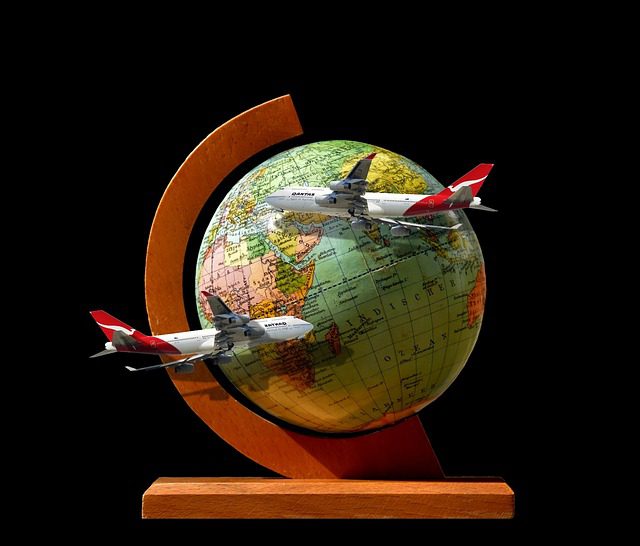
Photo by Pixabay / Free to use under license.
Dia de los Muertos: Mexico’s Celebration of Life and Death
In Mexico, Día de los Muertos transforms mourning into joyous remembrance. Marigolds, sugar skulls, and candlelit altars honor the departed with music and color. Rather than fearing death, the living embrace it as part of the eternal cycle—a lesson that infuses Halloween’s darker tones with a radiant sense of continuity.
Guy Fawkes Night and Other British Traditions
In the United Kingdom, Halloween’s echoes merge with Guy Fawkes Night, where bonfires commemorate a failed rebellion. The flames, fireworks, and effigies recall ancient fire festivals, bridging centuries of tradition. Across Europe, variations abound—each adding its own spectral flavor to the season.
Japan’s Unique Embrace of Western Halloween
Japan’s fascination with Halloween arrived not through folklore, but through fashion and festivity. Neon parades, cosplay extravaganzas, and themed cafés have reimagined the holiday as a vibrant urban celebration. It is less about spirits and more about spectacle—a cultural reinterpretation that highlights Halloween’s boundless adaptability.
How Modern Globalization Spread the Spooky Spirit
From Seoul to São Paulo, Halloween’s symbols have crossed oceans and cultures. Social media, film, and commerce have transformed it into a global phenomenon. Yet, at its core, the holiday remains a shared expression of humanity’s curiosity about what lurks beyond the light.
The Magic of Costumes and Disguises
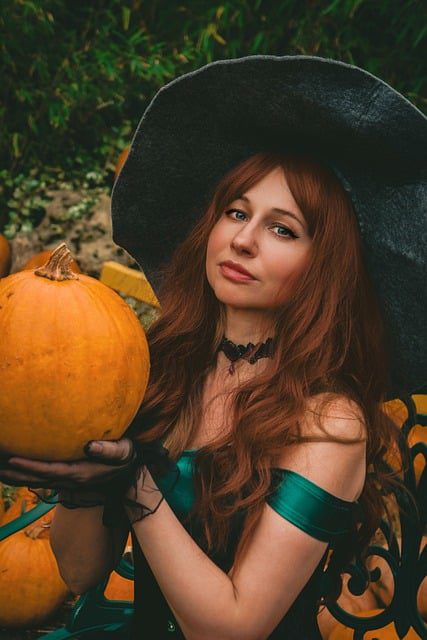
Photo by Pixabay / Free to use under license.
The Ancient Belief in Masks for Protection
In ancient times, masks were worn not merely for disguise, but for defense. People believed that by altering their appearance, they could confuse or repel malevolent spirits. To wear another face was to gain control over chaos—a ritual act of survival cloaked in creativity.
Pop Culture and the Rise of Costume Craze
Today, costumes mirror the zeitgeist. From classic monsters to superheroes, each disguise tells a story about our collective imagination. Halloween has become a stage for self-expression—a night when ordinary identities dissolve, and fantasy reigns supreme.
DIY Costume Ideas That Stand Out in the Dark
Handcrafted costumes retain a special magic—each stitch and smear of paint imbued with personal flair. From recycled fabrics to glowing LED enhancements, creativity often triumphs over expense. The best costume is not the most elaborate, but the one that captures a spark of invention.
Trick-or-Treating Through Time
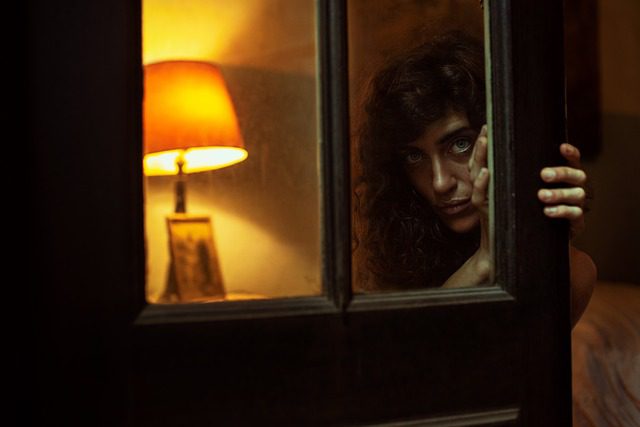
Photo by Pixabay / Free to use under license.
The Evolution of Door-to-Door Celebrations
The custom of souling evolved into guising and eventually trick-or-treating. Children roamed neighborhoods collecting sweets and performing small tricks in return. What began as spiritual exchange became a joyous social ritual, uniting communities under the banner of shared mischief.
Candy, Commerce, and Childhood Memories
No image defines modern Halloween more than a child clutching a bucket of treats. Candy brands compete for dominance, releasing limited editions and nostalgic flavors. Yet for many, the memory of crisp leaves, porch lights, and laughter remains the sweetest reward of all.
Safety, Etiquette, and Modern Alternatives
Contemporary celebrations have adapted to changing times. Trunk-or-treat events, mall gatherings, and supervised parades ensure safety while preserving the magic. Halloween continues to evolve, but its essence—connection through shared delight—remains unchanged.
Haunted Houses and Fright Attractions
The Psychology Behind Why We Love Fear
Fear is paradoxical—terrifying, yet intoxicating. Halloween capitalizes on this strange human craving. Within the safety of a controlled environment, people seek out fright as a way to feel vividly alive. Adrenaline floods the body, the pulse quickens, and laughter often follows the scream. Psychologists suggest that these experiences allow us to confront our primal anxieties—to flirt with danger while knowing we will survive it. Halloween, in this sense, becomes a ritualized dance with fear, a catharsis through the macabre.
From Amateur Scares to Professional Haunts
What began as neighborhood pranks and homemade ghost walks has evolved into a multimillion-dollar industry of professional haunted attractions. Elaborate sets, sound design, and immersive storytelling transport visitors into realms of terror—abandoned asylums, cursed carnivals, and haunted mansions. Each attraction seeks not just to frighten, but to awe, blending theater, architecture, and psychological manipulation into a modern spectacle of fear.
The Most Famous Haunted Attractions in the World
From the chilling corridors of The Queen Mary in California to the labyrinthine nightmares of The London Dungeon, haunted attractions have become cultural landmarks. In Pennsylvania, Field of Screams turns farmland into a living horror story. In Japan, Fuji-Q Highland’s Haunted Hospital claims to be the longest haunted house in the world. Each offers its own interpretation of fear—a mirror reflecting cultural nuances of what terrifies us most.
Halloween in Pop Culture
Iconic Horror Films That Defined the Holiday
Cinema has immortalized Halloween’s essence through decades of fright. John Carpenter’s Halloween set the template with its masked killer and haunting score. Tim Burton’s The Nightmare Before Christmas blurred the line between eerie and enchanting. These films, along with cult classics like Hocus Pocus and Beetlejuice, have etched Halloween permanently into pop culture’s imagination—each one rekindling the thrill of the season anew.
Spooky Soundtracks and Songs That Set the Mood
The music of Halloween lingers like an incantation. From the eerie organ notes of Bach’s Toccata and Fugue in D Minor to the playful rhythm of Monster Mash, sound shapes atmosphere. Playlists of crackling thunder, creaking doors, and ghostly whispers transform ordinary rooms into haunted chambers. Halloween’s soundtrack is one of anticipation and nostalgia—a symphony of shadows that transcends generations.
How Television and Media Reinvent Halloween Every Year
Television’s annual October offerings—special episodes, costume competitions, and horror marathons—sustain the cultural heartbeat of Halloween. Sitcoms turn spooky, streaming platforms debut ghostly anthologies, and social media bursts with DIY décor tutorials. Each year brings reinvention, yet the theme remains constant: the celebration of imagination through fear, humor, and wonder.
Food, Feasts, and Frightful Treats
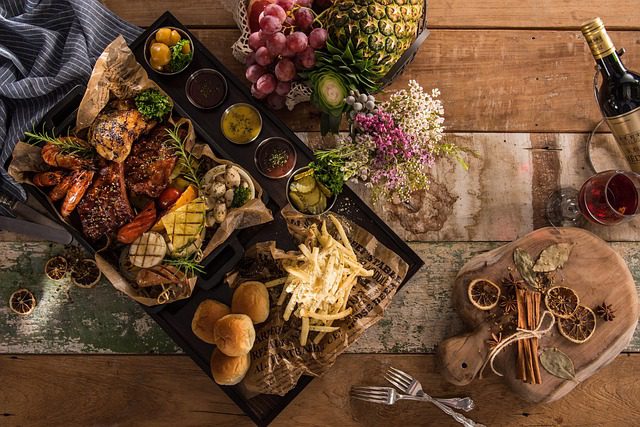
Photo by Pixabay / Free to use under license.
Traditional Halloween Dishes Across Cultures
In Ireland, barmbrack—a fruit-filled bread—hides charms foretelling the eater’s fortune. Scotland celebrates with colcannon, a creamy mix of potatoes and cabbage, symbolizing harvest’s bounty. In Mexico, sweet pan de muerto honors ancestors, while Americans favor candied apples and pumpkin pies. These dishes are more than food—they are edible links between the living, the dead, and the seasons’ turning.
Sweet and Spooky Recipes to Try at Home
Kitchen creativity thrives during Halloween. Cupcakes crowned with sugar cobwebs, black velvet cakes dusted with gold, and cocktails that smoke with dry ice turn any gathering into a feast of the uncanny. Even humble snacks—popcorn balls or caramel drizzles—become miniature celebrations of craft and comfort.
The Art of Hosting a Themed Halloween Dinner
A successful Halloween dinner is an act of theater. Dimmed lights, candle flicker, and tableware tinged in black and orange create the setting. Menus named after legends—“Vampire’s Elixir,” “Witch’s Brew,” “Ghostly Soufflé”—turn an evening meal into an immersive experience. Beyond taste, it is the mood—the play between light and shadow—that defines the feast.
Decorating for the Dark Season
Transforming Your Home into a Haunted Haven
Every cobweb, every flickering lantern contributes to the illusion. Homes metamorphose into gothic sanctuaries where creativity reigns. Entryways adorned with skeletal greeters and fog machines conjure anticipation. Inside, shadows dance upon walls as guests step into a dreamscape of delight and dread.
Pumpkin Carving Ideas That Amaze and Terrify
The art of pumpkin carving has transcended its humble origins. From intricate lace-like etchings to monstrous visages that seem to breathe firelight, carvers transform gourds into sculptures. Multi-layered carvings, using varying depths of cut, produce luminous effects—faces emerging like spirits from amber flesh.
Eco-Friendly and Sustainable Halloween Décor
Modern celebrations increasingly honor the planet as well as the past. Biodegradable decorations, natural candle wax, and repurposed fabrics replace plastic excess. Leaves, twigs, and gourds—simple elements of autumn—create haunting elegance while treading lightly on the earth.
The Role of the Supernatural
Witchcraft, Folklore, and the Mystical Side of Halloween
Witches, long misunderstood, have reclaimed their image through modern reinterpretation. Once symbols of fear, they now stand as icons of empowerment and intuition. Folklore merges with mysticism—herbs, moonlight, and ritual returning as metaphors for balance and transformation.
Spirits, Séances, and Stories from Beyond
From Victorian parlors to digital chatrooms, humanity has sought connection with the unseen. Séances once held by candlelight now echo in ghost-hunting shows and paranormal investigations. Whether scientific curiosity or spiritual yearning, Halloween invites these explorations with open arms, its darkness a canvas for belief and imagination alike.
Modern Pagan and Wiccan Observances
For many Pagans and Wiccans, Halloween—known as Samhain still—remains a sacred sabbat. It honors ancestors and the cyclical nature of life and death. Altars glow with offerings, and rituals focus on gratitude, reflection, and renewal. Beneath the costumes and candy, the spiritual core of the holiday endures quietly, reverently.
Halloween and the Human Psyche
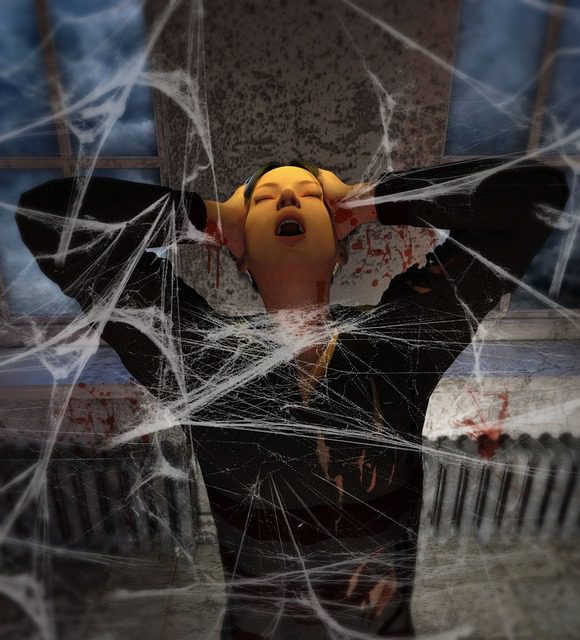
Photo by Pixabay / Free to use under license.
The Thrill of Fear: Why We Crave the Macabre
Fear connects deeply with the subconscious. To experience it in controlled bursts—a horror film, a haunted maze—is to confront mortality without consequence. Halloween provides this paradoxical pleasure: danger without damage, terror with laughter.
Halloween as a Form of Cultural Catharsis
Throughout history, societies have used festivals of fear to release collective tension. Halloween serves as a cultural valve—permitting rebellion, inversion, and indulgence before the winter months of introspection. It reminds us that confronting darkness can bring renewal.
The Psychology of Disguise and Identity Play
Masks liberate. Costumes allow people to shed expectations and inhabit hidden desires. A timid soul may become a vampire; a pragmatist, a sorcerer. For one night, the boundaries of identity blur, and fantasy offers emotional freedom—a vital act of self-exploration under the veil of make-believe.
Community and Connection in the Season of Shadows
Neighborhood Traditions and Social Gatherings
Front porches flicker with jack-o’-lanterns, and laughter spills into the streets. Halloween strengthens neighborhood bonds through shared participation. The collective rhythm of knocking, greeting, and gifting sweets builds community far beyond mere festivity.
Parades, Festivals, and Themed Events Worldwide
Cities pulse with parades of lights and costumes. From New York’s Village Halloween Parade to Dublin’s Samhain Festival, these gatherings transform urban landscapes into moving art. Each is a celebration of humanity’s creativity in the face of darkness—a pageant of spirits both real and imagined.
Charity, Inclusion, and the Spirit of Giving
Beyond revelry lies compassion. Many communities now pair Halloween with charity drives, inclusive events for children with disabilities, and sensory-friendly trick-or-treating. The generosity of spirit woven through the season reminds us that empathy is the truest form of magic.
Digital and Virtual Halloween Experiences
Online Costume Parties and Digital Haunted Houses
In the digital age, Halloween extends into cyberspace. Virtual costume contests and multiplayer haunted escape rooms bring the thrills of the night to screens worldwide. Technology becomes a new kind of cauldron—brewing community through connectivity.
Social Media Trends and Viral Halloween Moments
Hashtags glow like jack-o’-lanterns across timelines. DIY tutorials, makeup transformations, and short horror films dominate feeds each October. Platforms such as TikTok and Instagram amplify creativity, turning fleeting trends into modern folklore.
The Future of Halloween in a Tech-Driven World
Augmented reality may soon project phantoms into living rooms; AI-generated costumes could design themselves. Yet even as innovation reshapes experience, the heart of Halloween remains human—our longing for story, sensation, and shared wonder.
Halloween for All Ages
Keeping the Magic Alive for Children
For children, Halloween is pure enchantment—costumes, adventure, and sugar-laden joy. It cultivates imagination and confidence, transforming shy youngsters into heroes, monsters, and royalty for a night. These memories shimmer for decades, glowing brighter with nostalgia.
Adult Halloween Celebrations and Parties
For adults, the holiday reawakens playfulness often dulled by routine. Costume balls, masquerades, and themed gatherings allow escapism with elegance. Laughter replaces fear, and the evening becomes a toast to creativity and camaraderie.
Family Traditions That Stand the Test of Time
Carving pumpkins together, watching classic films, or hosting annual bonfires—these simple rituals create continuity between generations. Each act weaves families tighter, preserving the spirit of Halloween through shared delight.
The Economics of Halloween
How the Holiday Became a Billion-Dollar Industry
Halloween now stands as one of the most lucrative holidays worldwide. Costumes, candy, décor, and entertainment contribute billions annually. Its success lies in versatility—appealing to all ages, adaptable to any culture, and endlessly reinvented.
Marketing, Merchandise, and the Power of Nostalgia
Brands harness nostalgia to captivate consumers. Vintage-style decorations, classic monsters, and reissued candies transport buyers to childhood Octobers. The commercial engine of Halloween thrives not merely on novelty, but on memory.
Sustainability Challenges in the Halloween Economy
Yet commerce brings consequence. Mass-produced plastics, synthetic fabrics, and disposable décor contribute to waste. Conscious consumers now seek sustainable options—recyclable materials, thrifted costumes, and zero-waste festivities—ensuring the celebration honors both spirit and planet.
Safety, Ethics, and Responsibility
Costume Appropriation and Cultural Sensitivity
Awareness shapes modern festivity. Costumes once worn without thought may now offend or misrepresent. Choosing attire that celebrates creativity without exploitation ensures Halloween remains inclusive—a night for imagination, not insensitivity.
Food Allergies, Safety, and Accessibility
The rise of the Teal Pumpkin Project has encouraged allergy-safe treats and non-edible options. Accessibility in design—ramps, lighting, sensory adjustments—ensures every participant feels welcome in the revelry.
Keeping Halloween Safe in Modern Communities
Neighborhood watch programs, reflective costumes, and parent-led groups help maintain safety. The balance between freedom and protection ensures the night remains filled with laughter, not worry.
Beyond October 31: The Lingering Legacy
How the Halloween Spirit Extends Beyond the Holiday
Long after the candy is gone, Halloween’s spirit lingers. It colors autumnal fashion, décor, and entertainment. The aesthetic of pumpkins, moody candlelight, and twilight tones pervades homes through November, symbolizing comfort amid decline.
The Growing Influence of Autumn Aesthetics
“Spooky season” has evolved into an entire lifestyle—one celebrating fallen leaves, gothic beauty, and introspection. The imagery of Halloween now inspires design, music, and literature year-round.
Halloween’s Lasting Impact on Art, Culture, and Imagination
Artists, writers, and filmmakers continually draw from Halloween’s symbolic well—death, disguise, transformation. It reminds us that creativity flourishes where fear and fascination intertwine.
Conclusion: The Enduring Enchantment of Halloween
Why the World Remains Spellbound by the Spooky Season
Halloween endures because it unites opposites: light and dark, laughter and fear, life and death. It allows humanity to explore mortality with mirth and to celebrate imagination without restraint. Each year, it renews our collective enchantment with mystery itself.
The Balance Between Darkness, Delight, and Discovery
In the flicker of a candle, in the whisper of autumn wind, Halloween reveals its timeless lesson—that darkness is not to be feared, but understood. Through costumes, stories, and shared joy, we rediscover the thrill of being alive in a world that still holds wonder in its shadows.
